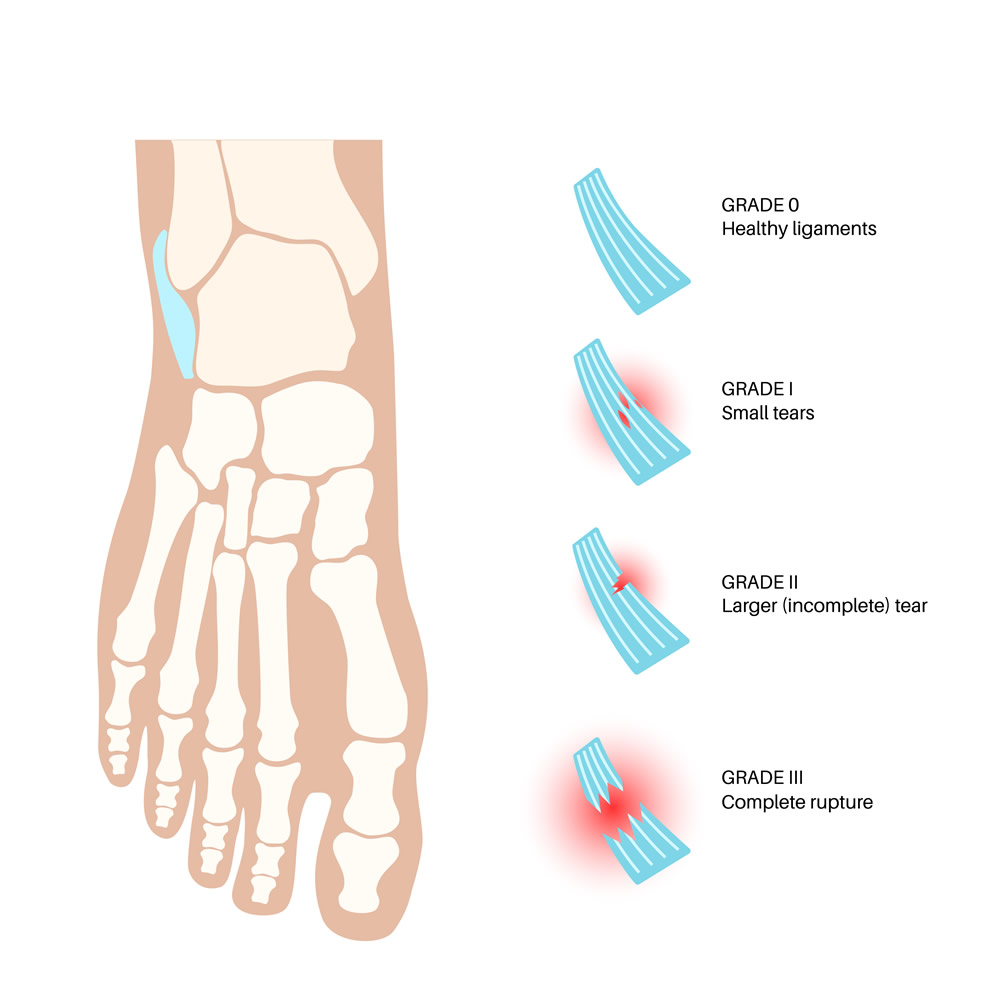
- Lateral Ligaments: These are located on the outer aspect of the ankle and include the anterior talofibular ligament (ATFL), calcaneofibular ligament (CFL), and posterior talofibular ligament (PTFL). The ATFL is the most commonly injured ligament during ankle sprains due to its vulnerability to inversion (rolling outward) injuries.
- Medial Ligaments: Positioned on the inner side of the ankle, the deltoid ligament is a strong and broad ligament that helps stabilize the joint. It is less commonly injured compared to its lateral counterparts but can be affected in severe ankle trauma.
- Syndesmotic Ligaments: These ligaments connect the tibia and fibula bones, maintaining the proper alignment of the ankle joint. The syndesmotic ligaments are essential for the stability of the joint, especially during weight-bearing activities.
Anatomy of the Ankle Ligaments
The ankle joint is a complex structure comprising bones, muscles, tendons, and ligaments that work in harmony to provide stability and facilitate movement. The ligaments play a crucial role in maintaining the integrity of the joint by connecting bones and preventing excessive motion. The ankle ligaments are classified into three main groups: lateral, medial, and syndesmotic ligaments.
Understanding the anatomy of these ligaments is crucial in assessing injuries and determining appropriate treatment strategies.
Mechanism of Injury to the Ligaments
Ankle ligament injuries often result from sudden twists, rolls, or impacts that force the joint beyond its normal range of motion. The most common mechanism of injury is an inversion sprain, where the ankle rolls outward, stretching or tearing the lateral ligaments. This frequently occurs during activities such as walking on uneven surfaces, playing sports, or sustaining accidental falls.
Medial ligament injuries, though less common, are usually associated with excessive eversion (rolling inward) of the ankle. Severe trauma, such as a high-velocity impact or a fall from a height, can also lead to ligament injuries.
Syndesmotic injuries are typically caused by excessive external rotation or dorsiflexion of the ankle. Athletes involved in high-impact sports, like football or basketball, are particularly susceptible to syndesmotic injuries due to the intense forces applied to the joint during rapid direction changes or collisions.
Surgical Reconstruction of the Ankle Ligaments
When conservative treatments, such as rest, physiotherapy, and bracing, fail to provide adequate relief or in cases of severe ligament tears, surgical intervention may be necessary. The goal of surgical reconstruction is to restore the stability and function of the ankle joint.
Common surgical techniques include ligament repair and reconstruction. In ligament repair, the torn ligament ends are reconnected, promoting natural healing. However, ligament reconstruction involves using grafts, often from the patient's own body or a donor, to replace the damaged ligament.
1. ATFL Repair
Procedure: ATFL repair involves suturing the torn ligament back together, allowing it to heal in its natural position. This technique is suitable for cases where the ligament has suffered a partial tear or avulsion from the bone.
Surgical Steps:
- The surgeon begins by making a small incision over the lateral aspect of the ankle to access the damaged ligament.
- The torn ends of the ligament are carefully identified and brought together.
- Sutures are used to secure the ligament ends, promoting a natural healing process.
- The incision is then closed, and postoperative care includes immobilization, often using a cast or brace, to protect the repaired ligament during the initial phases of healing.
Recovery: Following ATFL repair, patients typically undergo a structured rehabilitation program supervised by a physical therapist. The focus is on restoring range of motion, strength, and proprioception. Gradual weight-bearing activities are reintroduced, with the goal of returning the patient to normal function over several weeks to months.
2. ATFL Reconstruction
Indications: ATFL reconstruction is considered when the ligament is extensively damaged or when the patient has a history of recurrent ankle instability despite conservative treatments.
Procedure:
- A larger incision is made on the lateral aspect of the ankle to expose the damaged ligament.
- The surgeon removes the damaged or attenuated ATFL.
- Graft material is then introduced to create a new ligament. Autografts, commonly sourced from the patient's hamstring tendons of peroneus brevis tendon, or allografts (cadaveric tissue) may be used.
- The graft is secured in the appropriate anatomical position, typically by passing it through small bone tunnels in the talus and fibula.
- The incision is closed, and the patient is placed in a protective cast or brace to support the reconstructed ligament during the initial healing phase.
Recovery: Postoperative rehabilitation for ATFL reconstruction follows a similar trajectory as repair. Physical therapy focuses on gradually restoring strength, stability, and function. Weight-bearing activities are introduced cautiously, and a gradual return to sports or high-impact activities occurs over several months.
Considerations: The choice between repair and reconstruction depends on factors such as the extent of ligament damage, the patient's activity level, and the presence of associated injuries. While repair preserves the patient's native tissue, reconstruction provides a robust and reliable solution for cases of severe ligamentous injury.
In conclusion, both ATFL repair and reconstruction techniques aim to restore stability to the ankle joint and prevent recurrent instability. The choice of surgical intervention depends on careful consideration of the individual patient's condition and the nature of the ligament injury. Close collaboration between the surgeon and rehabilitation team is essential for achieving optimal outcomes in terms of function and long-term joint health.
To know more kindly contact the best orthopaedic surgeon Dr. Rahul Modi for further queries.
This surgery is frequently performed by the best orthopaedic surgeon Dr. Rahul Modi for treating Ligament Injury.